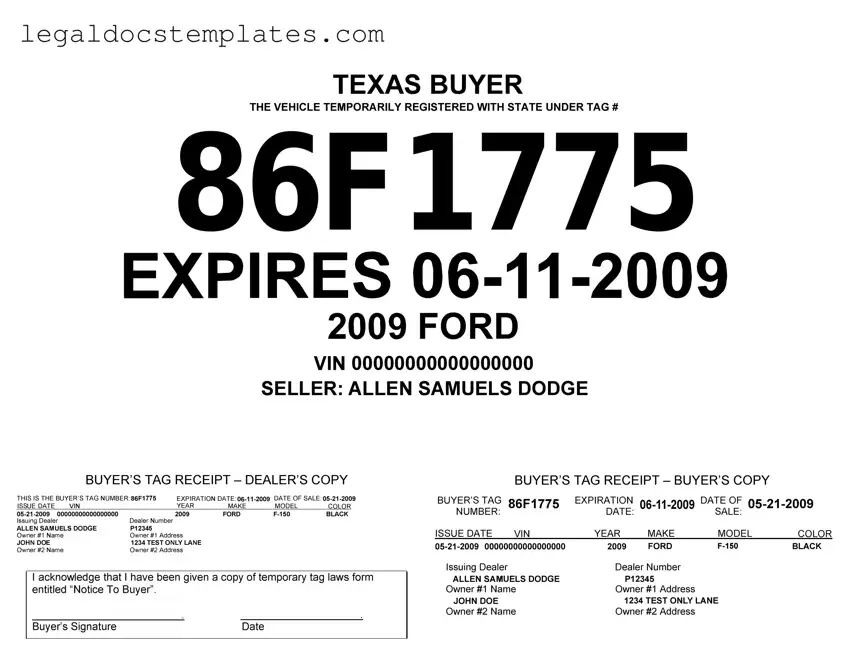The Texas Temporary Tag form shares similarities with the Vehicle Registration Application form used in various states. Both forms serve the purpose of registering a vehicle with the state's department of motor vehicles. They collect vital information about the vehicle, such as make, model, year, and VIN, along with the owner’s personal information. The primary difference lies in the duration and purpose of the registration; the temporary tag form is specifically for a short-term duration, typically 30 to 90 days, while the Vehicle Registration Application is for annual registration.
Another document similar to the Texas Temporary Tag form is the Parking Permit Application often found in municipalities or universities. Like the temporary tag, this form is used to grant permission for a specific vehicle to park in designated areas for a predetermined period. Both require the vehicle's identification details and are intended to regulate vehicle use in certain areas, albeit for different reasons and durations.
The Texas Temporary Tag Form also resembles an International Driving Permit (IDP) Application. While the temporary tag authorizes the vehicle to be on the road legally, the IDP allows a person to drive internationally. Both require personal and vehicular information, although the IDP also needs a valid domestic driver's license number and sometimes a photo of the driver.
Similar to the Bill of Sale Form for vehicles, the Texas Temporary Tag Form requires detailed information about the vehicle. Both documents are pivotal during the ownership transfer process. The Bill of Sale serves as evidence of the transaction and includes information about the buyer, seller, and vehicle. In contrast, the Temporary Tag is needed to operate the vehicle legally on public roads until permanent registration.
The Change of Address Form for Driver's License closely parallels the Texas Temporary Tag form in its administrative function. Both require updating records with current information. The Change of Address Form ensures the driver's license reflects the current residence, while the Temporary Tag provides updated vehicle status with the DMV, allowing for lawful use of the vehicle during the transition to permanent registration.
Like the Texas Temporary Tag form, the Driver's License Application form is an essential DMV document. Both serve as initial steps towards legal vehicle operation, though they focus on different aspects; the Driver’s License Application is for operating any vehicle legally, while the Temporary Tag specifically authorizes a particular vehicle's short-term use on public roads.
The Proof of Insurance Form bears resemblance to the Texas Temporary Tag form in that both are required by state law for vehicle operation. While the Temporary Tag indicates authorization for the vehicle's presence on public roads, the Proof of Insurance Form validates that the vehicle is insured according to state requirements. Both are critical for compliance with state regulations regarding vehicle operation.
Vehicle Inspection Forms share the purpose of ensuring a vehicle's roadworthiness with the Texas Temporary Tag form, albeit from a different angle. The inspection forms are used to assess the vehicle's safety and emissions standards compliance, necessary for both temporary and permanent registration. In contrast, the Temporary Tag allows the vehicle to be used on roads pending the completion of these and other registration requirements.
Lastly, the Application for Disabled Parking Placard/Plate is similar to the Texas Temporary Tag form in its personalization to the vehicle and owner for specific privileges. While the Temporary Tag grants the right to operate a vehicle on public roads for a limited time, the Disabled Parking Placard/Plate provides the vehicle's driver or passengers with parking privileges due to health conditions. Both forms require proper identification and cater to specific needs regarding vehicle use in public spaces.

